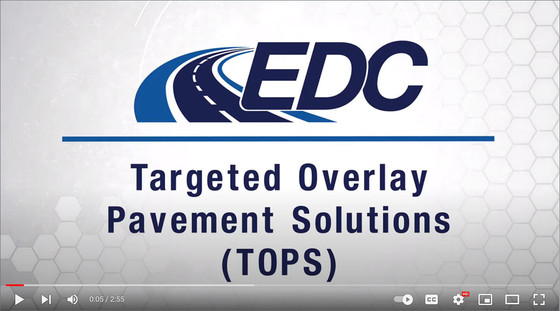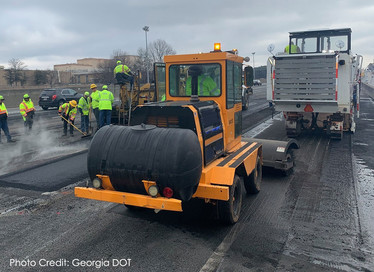
|
Targeted Overlay Pavement Solutions (TOPS)
|
|
TOPS e-bulletin October 2021 |
|
 |
The Targeted Overly Pavement Solutions (TOPS) team is developing resources to help transportation agencies select the right overlay product for the right location. The team has created fact sheets on different types of overlays and will release several case studies and how-to documents later this year. Webinars and workshops are also under development. The TOPS team is providing technical assistance to Hawaii, Iowa, and Nevada departments of transportation. To request support, contact FHWA TOPS co-team leader Tim Aschenbrener.
Check out this short TOPS video for an overview of this EDC innovation.

Georgia DOT Celebrates Two Decades of Success Using Stone Matrix Asphalt

Stone matrix asphalt (SMA) marks two decades of success in the U.S. this year, and while it has been used in at least 40 States, only 18 departments of transportation (DOTs) use it routinely. Georgia DOT was one of the first agencies (along with Michigan, Wisconsin, Missouri, and Indiana) that used information from a European Asphalt Study Tour to design and place SMA test sections in 1991. Several of Georgia’s interstate routes needed resurfacing and additional lanes added due to increased traffic volumes and heavy loads. After several years of research, early project performance evaluation, and review of European experiences, SMA mixtures were found to be more rut resistant, had longer fatigue lives, and had longer service lives than conventional dense-graded mixtures. As a result of Georgia’s successful experience with SMA mixtures, SMA use was expanded to all interstate projects and State routes with an average daily traffic volume of 50,000.
Georgia typically places open-graded friction course (OGFC) as the final riding surface on these routes for safety reasons and uses SMA as the dense-graded surface mix foundation due to its long-term durability. As an example of SMA durability, one of the first full-scale SMA projects constructed in 1994 was on I-95 in Chatham County near Georgia’s coastline. The project had approximately 72,000 vehicles per day, with 28.5 percent of that being truck traffic. The OGFC surface layer typically placed on interstate routes was replaced in 2009 after 15 years, but the SMA layer underneath is still performing well after more than 25 years of service.
Since the first test section in 1991, over 4.4 million tons of SMA have been placed on more than 133 projects in Georgia.
|
Stay Connected |
|
 |
If you are not already a subscriber, the Center for Accelerating Innovation invites you to subscribe to EDC News and Innovator. These newsletters showcase successful deployments of EDC initiatives and other innovative topics in the highway industry.

|
About EDC
Every Day Counts, a state-based initiative of the Federal Highway Administration's Center for Accelerating Innovation, works with state, local and private sector partners to encourage the adoption of proven technologies and innovations to shorten and enhance project delivery.
|
|
Federal Highway Administration | Center for Accelerating Innovation | U.S. Department of Transportation
|